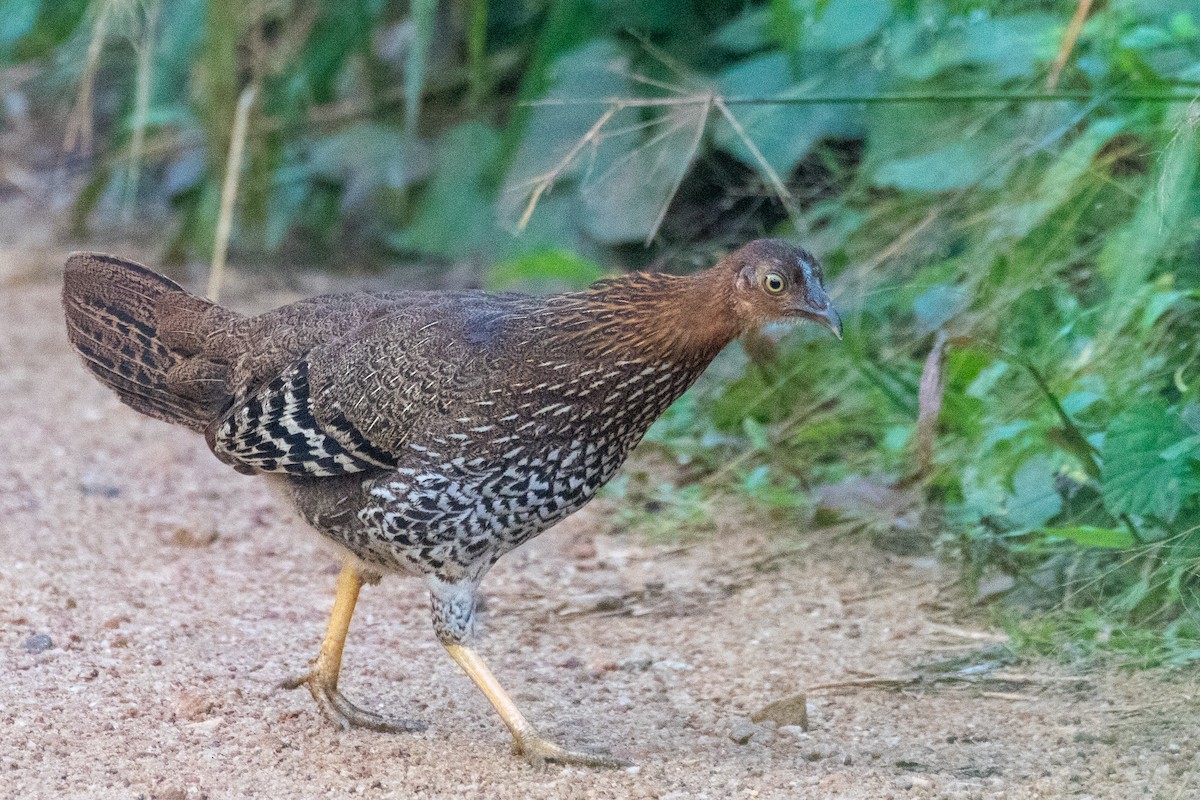Sri Lanka Junglefowl
A species of Junglefowl Scientific name : Gallus lafayettii Genus : Junglefowl
Sri Lanka Junglefowl, A species of Junglefowl
Botanical name: Gallus lafayettii
Genus: Junglefowl
Content
Description General Info
 Photo By Steve McInnis
Photo By Steve McInnis Description
As with other junglefowl, the Sri Lankan junglefowl is strongly sexually dimorphic; the male is much larger than the female, with more vivid plumage and a highly exaggerated wattle and comb. The male Sri Lankan junglefowl ranges from 66–72 cm (26–28 in) in length and 790–1,140 g (1.74–2.51 lb) in weight, essentially resembling a large, muscular rooster. The male has orange-red body plumage, and dark purple to black wings and tail. The feathers of the mane descending from head to base of spine are golden, and the face has bare red skin and wattles. The comb is red with a yellow centre. As with the green junglefowl, the cock does not possess an eclipse plumage. The female is much smaller, at only 35 cm (14 in) in length and 510–645 g (1.124–1.422 lb) in weight, with dull brown plumage with white patterning on the lower belly and breast, ideal camouflage for a nesting bird. 
Size
72 cm
Nest Placement
Ground
Feeding Habits
Sri Lanka Junglefowl consumes a diverse diet including grass seeds, seed pods, berries, flower petals, and various invertebrates like scarab beetles and termites. They forage in groups or alone, mainly in early mornings and evenings, especially after rainfall, but avoid midday heat.
Habitat
Sri Lanka Junglefowl inhabits a variety of forested landscapes, including coastal scrub and mountain forests, with a range extending from sea-level to approximately 2300 meters elevation. Sri Lanka Junglefowl primarily prefers dry forest environments but is also known to occupy plantation areas and scrub-jungle ecosystems. This species typically roosts socially in trees and in clumps of bamboo. Geographically, sri Lanka Junglefowl is adapted to broad climatic zones with varying altitudes across forest regions.
Dite type
Omnivorous
General Info
Feeding Habits
Bird food type
Behavior
As with other jungle fowl, Sri Lankan jungle fowl are primarily terrestrial. They spend most of their time foraging for food by scratching the ground for various seeds, fallen fruit, and insects. Females lay two to four eggs in a nest, either on the forest floor in steep hill country or in the abandoned nests of other birds and squirrels. Like the grey and green junglefowl, male Sri Lankan junglefowl play an active role in nest protection and chick rearing. 

 Photo By Steve McInnis
Photo By Steve McInnis